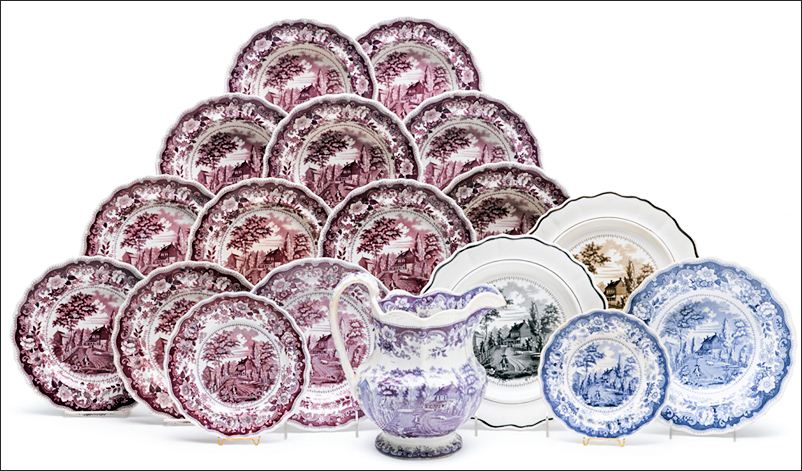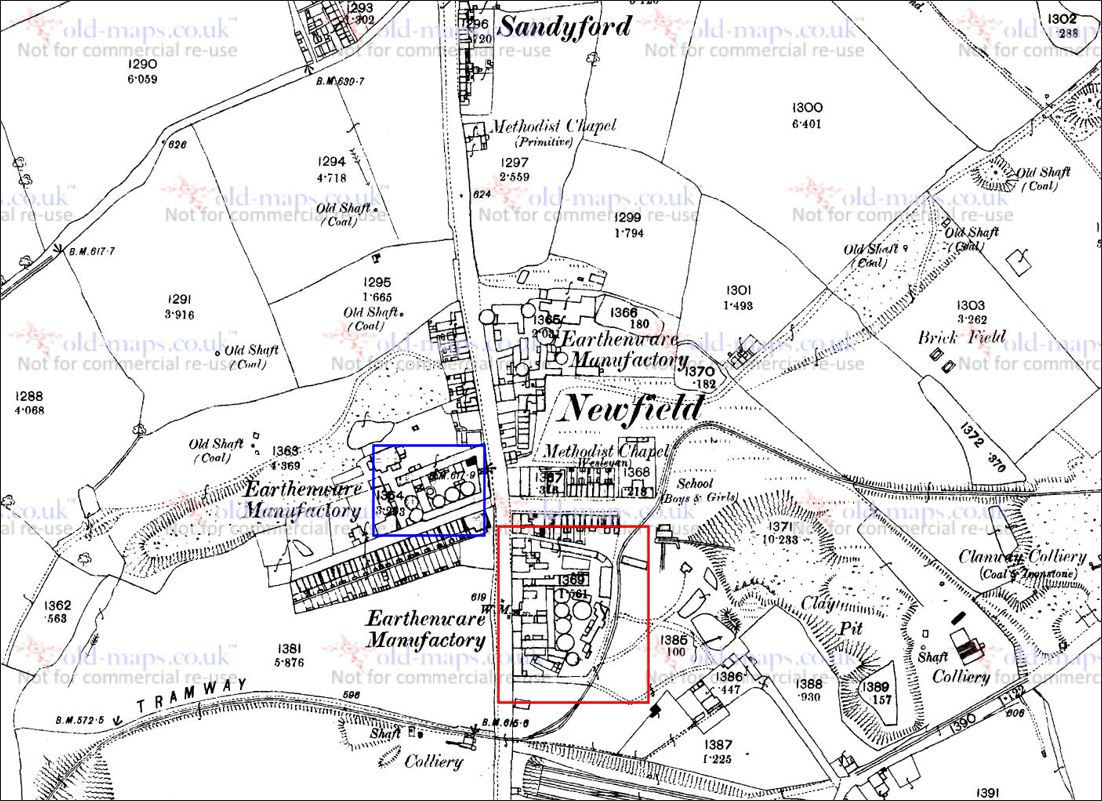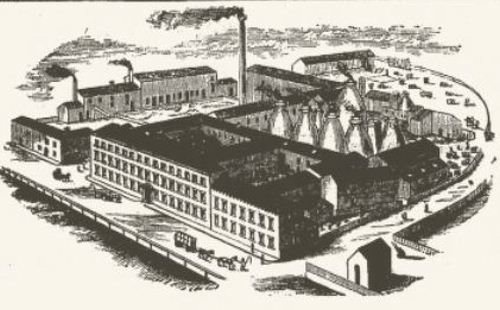![]()
|
Joseph Heath & Co |
Location and period of operation:
|
Joseph Heath
& Co |
Tunstall |
1828 |
1841 |
| Earthenware manufacturer at the Newfield Pottery, Tunstall, Stoke-on-Trent, England. |
|
Italian Villas was a
series of romantic patterns on ware with a wavy edge. |
|
|
|
|
|
a romantic view with
Lombardy poplar trees alongside a lake shore |
this plate also bears an impressed 'propellor' mark, set within a circle of dots - this mark was often used by Joseph Heath & Co |

a collection of ware of
"The Residence of the late Richard Jordan"
this transferware pattern appears in a wide variety of items, colours, shapes, and sizes
|
Richard Jordan (1756 - 1826) was a Quaker preacher and one of the first to speak out against slavery. This view of Jordan, standing outside his farmhouse at Camden, New Jersey in 1826, was drawn by his friend William Mason. |
|
the mark also includes an impressed 'propellor' mark, set within a circle of dots |
Newfield Pottery
|
There was a pottery attached to the Newfield estate on the main road between Tunstall and Goldenhill towards the end of the 18th century when it was worked by John and Caleb Cole. By 1802 it was in the hands of Caleb and his brother-in-law William Adams of Greengates and was apparently held by William alone at the time of his death in 1805. It was then advertised as being to let, but by 1806 it was being worked by the owner of the Newfield estate, Admiral Smith Child, from 1809 in partnership with John Henry Clive. After the Admiral's death in 1813 Clive managed both estate and works on behalf of the heir, Smith Child, probably until c. 1824. The products of Child and Clive included good quality cream ware. Until 1872 the pottery remained in the hands of tenants, including Joseph Heath and Company from 1824 until at least 1841 and Podmore, Walker, and Company between at least 1848 and 1853. In 1872 Smith Child sold it to William Adams of Greenfield, the tenant since at least 1860. It was worked by W. H. Grindley and Company from at least 1880 until 1891 and was taken over by T. Rathbone and Company in 1892. Since 1918 it has been in the hands of Alfred Meakin (Tunstall) Ltd., who also work the Royal Albert and Victoria Potteries in Parsonage Street and opened a new works on a site off Hollywall Lane in 1957. Source: 'Tunstall', in A History of the County of Stafford: Volume 8, ed. J G Jenkins (London, 1963), pp. 81-104. British History Online http://www.british-history.ac.uk/vch/staffs/vol8/pp81-104 |

1879 map of the Sandyford &
Newfield area - just north of the town of Tunstall
The Newfield pottery is
highlighted in red, across the road was the Boston works (shown in blue -
operated by Jabez Blackhurst).
Newfield Pottery
was originally in the hands of Caleb Cole and William Adams
Joseph Heath and Company were tenants from
around 1824 until 1841

the Newfield Pottery in
1880
in 1880 W. H. Grindley took over the works until 1891
Questions, comments, contributions? email: Steve Birks